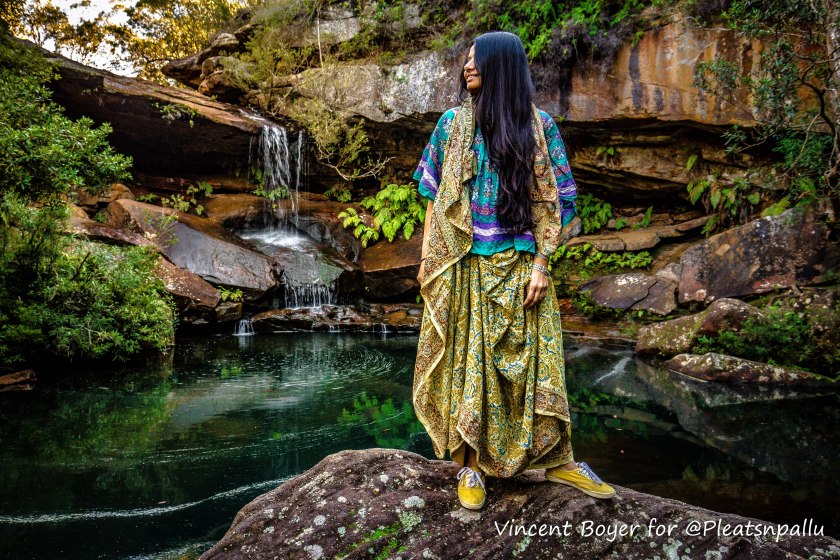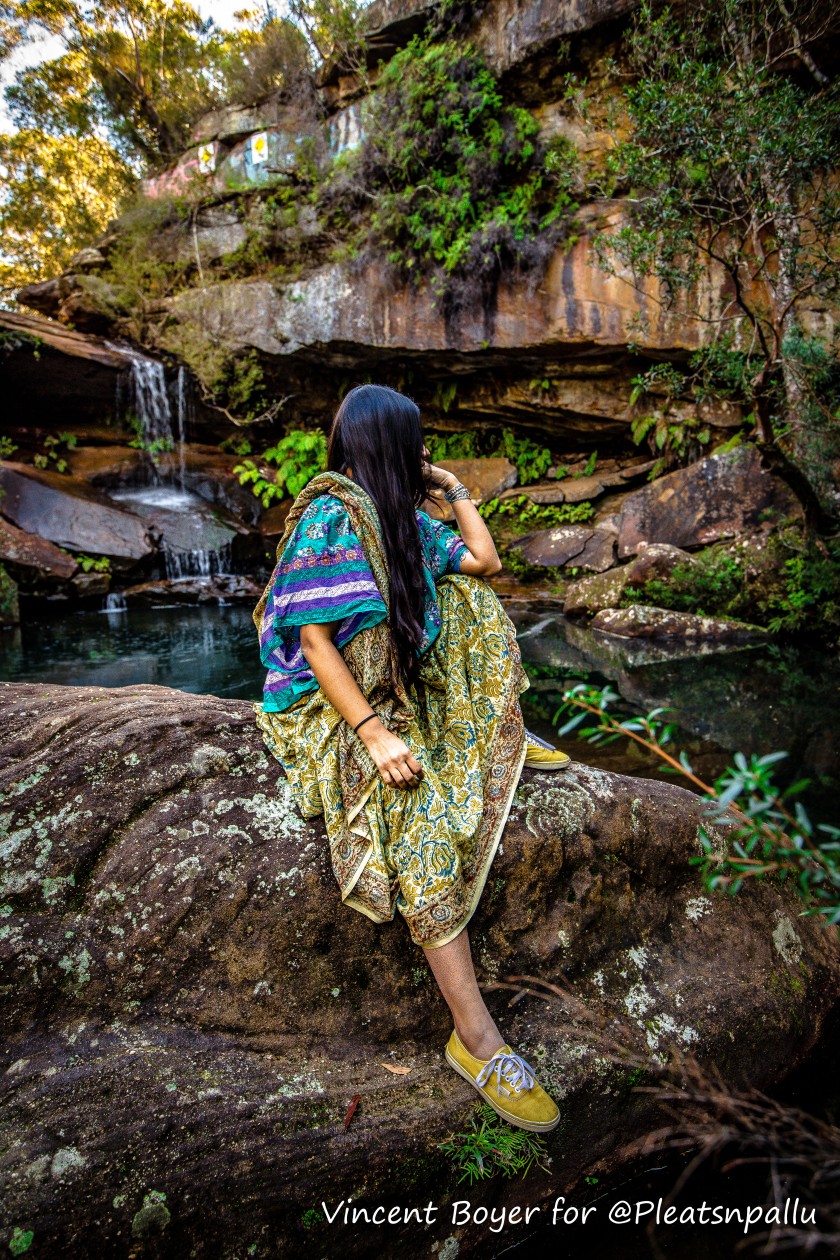Exploring the wilderness, chasing waterfalls, connecting with Mother Nature wearing handcrafted sarees draped with wild abandon in dirty sneakers but with a happy spirit …



Photos: Vincent Boyer (Say hi on instagram @vincetravelbook)
On a quest to find an unspeakable treasure in the majestic splendour of the tropical rainforest…The vast canopy of green, the mist covered carpet of ferns and the jaw-dropping waterfalls adding to the mystique…The search for a magical, fantastical place where tranquility and peace reign.
I could go on and on about my love for natural water bodies and wilderness but suffice to say that they calm my frenzied mind and battered soul.
When I’m feeling anxious, stressed, lethargic, uninspired or just a bit low I get outdoors to soak up fresh air and sunshine that work wonders for increasing my energy levels. Another thing that truly helps me feel centred and comfortable are hand crafted clothes using natural fabrics and dyes.
The saree in these photos is a Kalamkari from Andhra Pradesh worn with a handcrafted top from Jaipur. Both the fabrics have been hand blocked but the motifs used are typical of the region they were made in.
Hand block printing is a centuries old Indian art form that utilizes a hand carved teak wood block that is dipped in dye and stamped by hand onto cotton or silk. Like most crafts in the subcontinent this art form is also passed down through generations of skilled artisans who then carry the art forward.
In 2013, Pedana town and its neighbouring villages of Machilipatnam, Polavaram and Kappaladoddi in the Krishna district of Andhra Pradesh won the geographical indication (GI) tag for the production of Machilipatnam Kalamkari, which involves carving out intricate designs on wooden blocks, and using these to print patterns on fabric.
The process of hand blocked kalamkari fabrics involves a range of very exacting and time-consuming steps, one of which is to wash the fabric in the Krishna River to ensure that the colour lasts longer. According to local artisans the water in the river has the correct mineral composition required to help the colours develop and set.
The traditional Kalamkari dyeing process includes mordant dyeing, colour dyeing, and repeated washing, rinsing, bleaching and soaking. The ancient recipes for preparing dyes from a variety of roots, seeds, barks, crushed flowers and fruits are also complex.
Each color requires its own block, which is dipped into dye and pressed onto the fabric, as in other hand-block techniques. In tradtional Kalamkari fabrics even the background is produced by block printing instead of immersion dyeing.
Typically, one block prints a motif shape; a second block outlines this design; and a third block is stamped in between motifs to provide a background colour. Precise placement of all the blocks is crucial to present a seamless impression.
Every bit of hand block printed fabric tells a story of where it has originated. Its final colours are influenced by many factors like the minerals in the water and the weather conditions when it was made.
I cannot have enough of various kinds of of block print fabric from different regions of India, here, here, here, here, here, here, here, here, here, here and here are some previous posts featuring them.